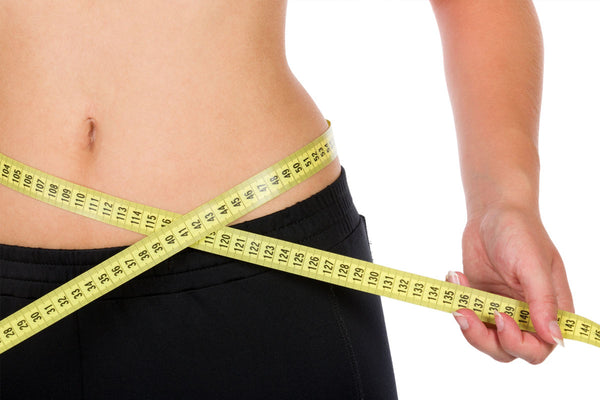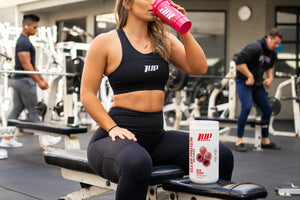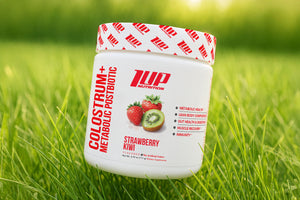The 1UP Transformation Challenge was created to help people achieve their best bodies every by providing motivation, training information, nutrition advice, and incentives.
Over the past year, we’ve had thousands of people enter our challenges and make dramatic changes.
But, one question we see contestants constantly struggle with is whether or not they should start off their transformation challenge cutting or bulking.
That’s where this article comes in handy.
We’ll sort through all the noise and give you the easiest way to know if you should cut or bulk.
Should I Cut or Bulk?
The answer to this question really hinges on what your current body fat percentage is and what your present training and physique goals are.
Generally speaking, the easiest way to know whether to cut is if:
- You’re a female with more than 25% body fat
- You’re a male with greater than 15% body fat.
If you are above this body fat threshold, and you’re not a competitive powerlifter or strongman in training, then you should probably cut.
Simply put, none of us like to feel soft or “fluffy.”
Trying to bulk up really won’t do much to improve the overall appearance of your physique as there is too much fat covering up the lean muscle mass underneath.
Plus, anytime you do bulk, fat gain is part of the process.
There’s no point in accumulating additional body fat for the sake of a few more ounces of muscle mass, especially if building mass isn’t your primary goal at this point of your fitness journey.
Along those same lines, if you are very overweight, then you absolutely should cut first, if for no other reason than your overall health and wellness. Excess body fat is a cause of numerous diseases and disorders (including heart and cardiovascular disease).[1]
It also accelerates aging, increases morbidity and mortality, and decreases an individual’s quality of life.[2]
On the flip side, a general rule of thumb is that you should bulk if:
- You’re a female at or below 20% body fat, or
- You’re a male at or below 10% body fat.
When you’re at this level of leanness, your ability to build more muscle and gain less fat is heightened for a variety of reasons, such as greater insulin sensitivity, more stable estrogen levels, and higher testosterone levels.[3]
In case you weren’t aware, having too much body fat reduces insulin sensitivity and testosterone while increasing estrogen levels in the body, which makes it harder to build muscle while avoiding excessive fat gain during a bulk.
Furthermore, the leaner you are when you start a bulk, the longer you’ll be able to stay in “bulking mode” before having to cut.
Now, what if you’re in the middle?
Let’s say that you don’t have too much body fat and you’re not too lean, meaning if you’re a female between 20-25% body fat or a male between 10-15% body fat.
What should you do -- cut or bulk?
In this scenario, personal preference dictates.
If you like the fact that you have some ab definition and want to build more muscle, you can perform a lean bulk up to the point where you can no longer see some definition in your abs (which is usually around 25%/15% threshold).
Or, if you want to get really lean, you can diet down until you hit the 20%/10% body fat threshold, and then perform a long and steady bulk to build muscle while limiting fat gain.
Ultimately, the decision of whether to bulk or cut when you’re in the mid-range of body fat percentages hinges on what you want to do.
In other words, choose the option that excites you the most.
What About Recomping (Burning Fat and Building Muscle at the Same Time)?
Many of you reading this have likely heard the term “recomp” thrown around, especially when it comes to body transformations.
And, while the thought of building muscle and losing body fat at the same time sounds intriguing, it’s not the most practical approach for most people.
The reason for this is that recomping is most effective in those individuals who are new to training or coming back from a very long gym absence due to the fact that resistance training is a new stimulus to the body. As such, the body is in a deconditioned state and will be highly receptive to any new form of training.
Unfortunately, for Individuals who train consistently in the gym, recomping is a long, slow, arduous process that can feel like you’re spinning your wheels most of the time -- not really gaining strength or muscle or losing noticeable amounts of body fat.
This is why we suggest individuals who have experience training either decide to cut or bulk (based on the guidelines we discussed above).
Takeaway
The easiest way to know if you should cut or bulk is to take note of your current body fat percentage.
If you are a female with greater than 25% body fat or a male with more than 15% body fat, you should cut.
Conversely, if you are a female at or below 20% body fat, or a male at or below 10% body fat, you should bulk.
If you’re in the middle, then the choice ultimately boils down to what you want to do with your diet and training. If you want to build muscle, gain strength, and are OK with gaining a bit of body fat, then choose the bulking route. If you want to stay lean or tone up before undertaking a bulk, then cut.
In the end, in order to have a successful body transformation, you will likely need to perform a cut and a bulk. For how long and how frequently you need to do either depends on your starting state.
And, if you think you have what it takes to make a truly radical transformation, consider signing up for the 1UP Transformation Challenge where you can receive customized training and nutrition advice as well as the opportunity to win cash and prizes!
References
- Susanna C Larsson, Magnus Bäck, Jessica M B Rees, Amy M Mason, Stephen Burgess. Body mass index and body composition in relation to 14 cardiovascular conditions in UK Biobank: a Mendelian randomization study. European Heart Journal, 2019; DOI: 10.1093/eurheartj/ehz388
- Knight, J. A. (2011). Diseases and Disorders Associated with Excess Body Weight. Annals of Clinical & Laboratory Science , 41(2), 107–121.http://www.annclinlabsci.org/content/41/2/107.abstract
- Jensen J, Rustad PI, Kolnes AJ, Lai YC. The role of skeletal muscle glycogen breakdown for regulation of insulin sensitivity by exercise. Front Physiol. 2011;2:112. Published 2011 Dec 30. doi:10.3389/fphys.2011.00112






